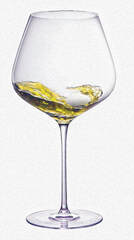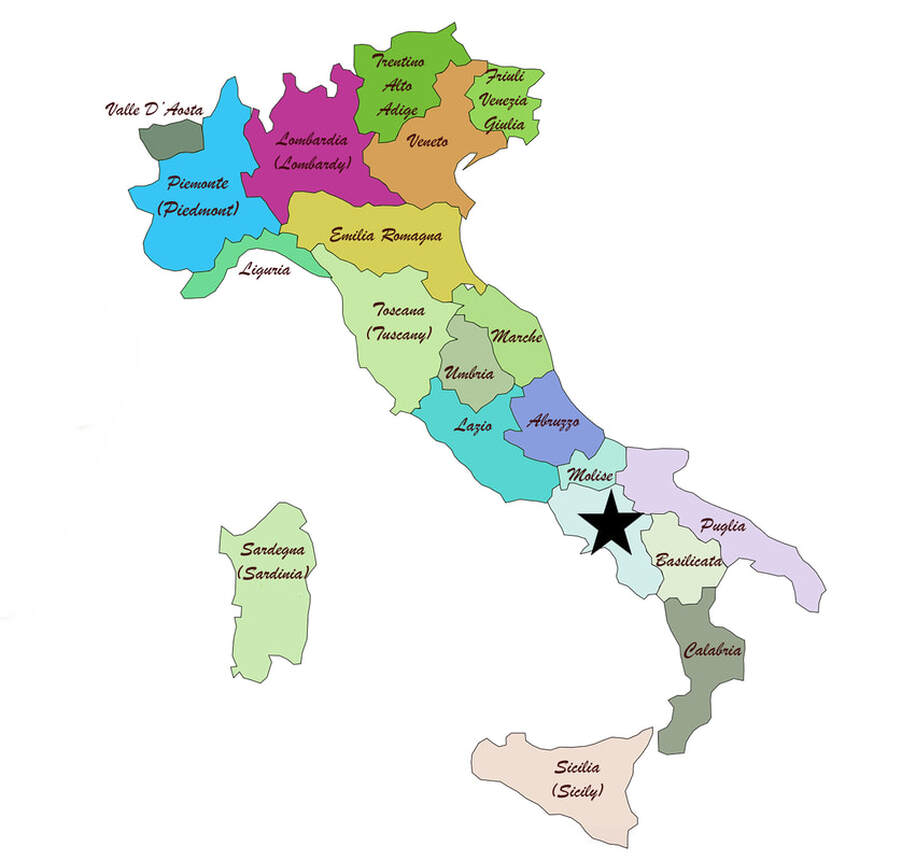
Region: Campagna (Campania), Basilicata
Quality Level in EU/Italian Wine Law: Vesuvio DOC
Established: The DOC was established in 1983
Primary Grape Varieties: White wines are usually blended and can be found as Vesuvio Bianco or Lacryma Christi Bianco which are at least 45% Coda di Volpe of Caprettone. The white blends also can contain Falanghina and Greco.
Pairs with: Pasta with mussels, Crustacean meals, fish soups, asparagus risotto, vegetables, fresh cheeses
Wine Styles: The wines are produced as white wines and in sparkling styles. The wines are pale in color and can be quite aromatic with aromas of minerality, tree fruit, tropical fruit and/or stone fruit, depending on the level of ripeness. The wines are dry with moderate alcohol, well structured but a bit soft and floral.
Coda di Volpe translates to the "fox tail" and the name is derived by the unique shape of the grape clusters which is said to remember the tail of a fox. This grape is most famous as the blending partner in Vesuvio DOC wines. Vesuvio DOC surrounds the volcano which towers over Naples and was responsible for the destruction of Pompeo 2000 years ago. Vesuvio is dormant these days and the surrounding soil is very volcanic in nature and perfect for Coda di Volpe and the other DOC varieties.
The first known reference to Coda di Volpe was in 1592 by Giovan Battista della Porta. This grape is also known as Falerno which was a famous Roman wine and may have some relation to Coda. The grape is only moderate in yield with harvest tied to a mid-to late ripening character and October harvest. The wine can develop and retain sugars for a higher potential alcohol while keeping only a medium acidity level.
Coda di Volpe was considered to be a minor player in the region and not much more than a blending partner. Recent efforts to increase quality have resulted in outstanding wines or interest and greater efforts to maximize the potential of this grape variety.
Quality Level in EU/Italian Wine Law: Vesuvio DOC
Established: The DOC was established in 1983
Primary Grape Varieties: White wines are usually blended and can be found as Vesuvio Bianco or Lacryma Christi Bianco which are at least 45% Coda di Volpe of Caprettone. The white blends also can contain Falanghina and Greco.
Pairs with: Pasta with mussels, Crustacean meals, fish soups, asparagus risotto, vegetables, fresh cheeses
Wine Styles: The wines are produced as white wines and in sparkling styles. The wines are pale in color and can be quite aromatic with aromas of minerality, tree fruit, tropical fruit and/or stone fruit, depending on the level of ripeness. The wines are dry with moderate alcohol, well structured but a bit soft and floral.
Coda di Volpe translates to the "fox tail" and the name is derived by the unique shape of the grape clusters which is said to remember the tail of a fox. This grape is most famous as the blending partner in Vesuvio DOC wines. Vesuvio DOC surrounds the volcano which towers over Naples and was responsible for the destruction of Pompeo 2000 years ago. Vesuvio is dormant these days and the surrounding soil is very volcanic in nature and perfect for Coda di Volpe and the other DOC varieties.
The first known reference to Coda di Volpe was in 1592 by Giovan Battista della Porta. This grape is also known as Falerno which was a famous Roman wine and may have some relation to Coda. The grape is only moderate in yield with harvest tied to a mid-to late ripening character and October harvest. The wine can develop and retain sugars for a higher potential alcohol while keeping only a medium acidity level.
Coda di Volpe was considered to be a minor player in the region and not much more than a blending partner. Recent efforts to increase quality have resulted in outstanding wines or interest and greater efforts to maximize the potential of this grape variety.
Producer/Theme websites:
